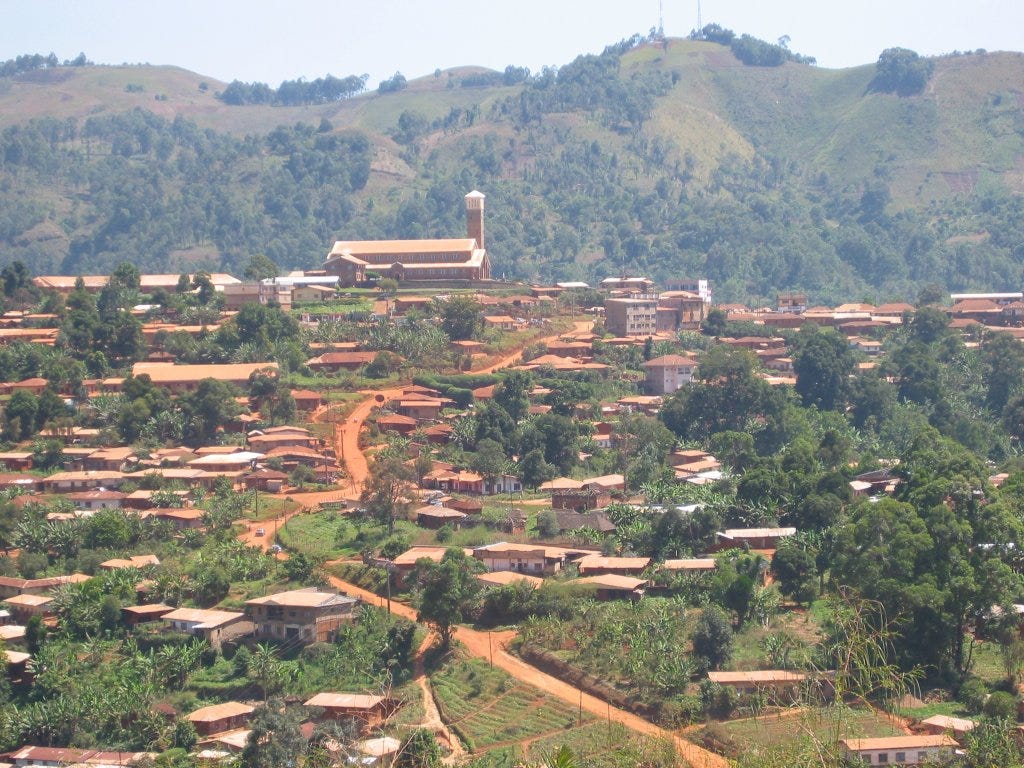Dear Friends,
As we welcome the month of October and all the wonderful and woeful things it will surely bring, may I invite you, once again, to pause for a breath with me? This shouldn’t take too long. Close your eyes. Relax into whatever posture you are in, whether sitting, standing, leaning, or laying down. Pull in a breath. Do it slowly, perhaps to the count of four. Notice the cool rush of the inflow, the expansion of your chest and belly. Maybe hold this breath for four seconds before releasing it slowly, again, noticing the now warmer rush of the outflow, the contraction of your chest and belly. (Repeat as much as you would like if it felt good!)
Breath is an ever-present anchor to reality and the most fundamental of existential acts performed by our species. The primacy of breath is not lost to African peoples. To the Nso of Cameroon’s Northwest region, the word Nyuy which is used to refer to the Supreme Being, Spirit, the “First Cause” and the most essential manifestation of Life, can be translated as Breath.[i]
Nyuy is said to be formless, impersonal, immanent, and without gender. Nyuy is, however, evident in all life and nature, making itself felt in unexpected events and numinous places. Nyuy rarely communicates with the living, a task assigned to Anyuy, which are lesser divinities in their own right, or divinized ancestors. Nso sages say that Nyuy can communicate with the dead, and that by blowing into the womb at the sixth month, Nyuy gives motion to the foetus. Breath (or Nyuy) has no central shrine devoted to it. Instead, Kire ke Nyuy which means “Place-of-Breath", were found on the edge of homesteads, around and on the paths to old and new palace and market sites, as well as at waterfalls and high places endowed with springs. These places were different from ancestral sacrifice sites. For example, people left offerings of palm wine and camwood (Baphia nitida) at these sites, instead of the animal sacrifices made at ancestral sites. We would need a Nso sage to fully explain the many dimensions of Nyuy and Kire ke Nyuy, but I find myself pondering the idea of a "Place-of-Breath”. The image of a Nso elder standing at one such spots, toes curling into red earth, breathing in crisp morning air mixed with the sweet-tart scent of fresh palm wine lingers in my mind.
Kumbo, the capital city of the Nso Fondom
I am Cameroonian by birth and upbringing but I am not Nso and so I don’t know more about how Nso people traditionally relate to Nyuy. I wonder, often, about how Nyuy might be similar to Prana or Ch’i. My ignorance on the matter weighs on me since I practice meditation which uses breath as a way to focus the mind and am currently exploring Buddhist spirituality. Why, I ask myself often, am I studying spirituality from Asia when this thread linking to a potentially rich tapestry of knowledge hangs unexplored before me? This is not an easily answered question. I do, however, firmly believe that in the course of the pursuit of full personhood, one should not limit themselves but try to (respectfully) learn from as many available sources of human knowledge and well-being as possible. So, I keep the door open to learning.
The Mythological Africans adventure is a main way I keep these doors open. I especially love the Twitter Spaces meetups during which we read and talk about folklore from the African continent. The subsequent discussions are always informative and invigorating, a welcome reminder that there is still much to rediscover about who we are as African people. There have been many rediscoveries this past month. We told fairy tales like the story of Chichinguane and Chipfalamfula, and discovered African scripts and systems of writing. We also delved into divination practices across the continent in Episode 5 of the Deep Dive series, and this blog post which focuses mainly on Cameroonian divination practices. Have you seen the Turn Up thread? I dare you not to dance along! We also kept the Anansi Archive project alive with this exploration of mythical creatures in African folklore. In addition, our friend Laura Gibbs (who you should really be following if you love mythology and folklore) put together this awesome Flickr album of illustrations from African mythology and folklore which are in the public domain.
I can’t thank you enough for going on this journey with me. The adventure continues this month with stories, Twitter Spaces gatherings, art, dance and more!
Be well,
Helen
[i] Chilver, Elisabeth M. "Thaumaturgy in contemporary traditional religion: the case of Nso in mid-century." Journal of religion in Africa 20.3 (1990): 226-247.




